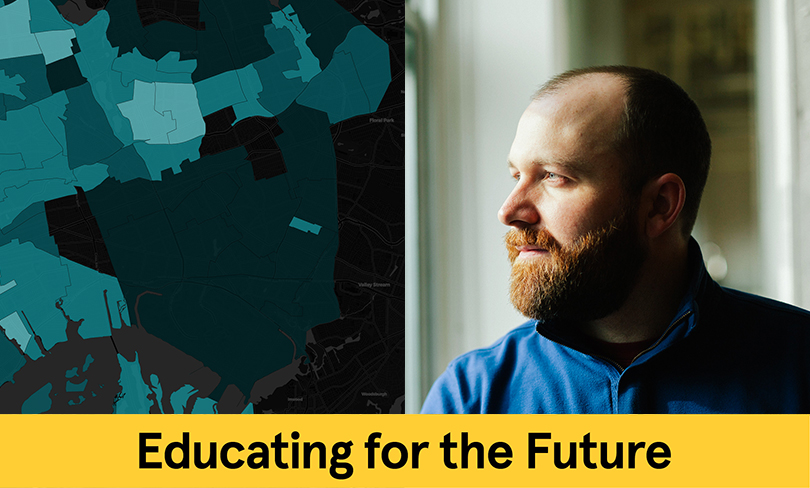
Exploring new models for education is one of the pillars of President Frances Bronet’s inauguration and an important area of discussion in academia. We live during a time of dramatic change, where the landscape is quickly shifting. How is Pratt preparing its students for careers and technologies that aren’t here yet?
In this new weekly series, “Educating for the Future,” educators across Pratt’s disciplines share their vision as to how they are educating students for a world that is quickly evolving—and reflect on what is needed to prepare the next generation for an environment that is rapidly changing.
This column is by Craig MacDonald, Associate Professor and Program Coordinator, MS in Information Experience Design, in Pratt’s School of Information.
The changing technology landscape has had a dramatic effect on the user experience (UX) discipline. We’ve seen the rise and fall of countless technologies over the past 50 years, and the next 50 years may be even more disruptive.
As educators, we absolutely need to make sure our students can keep pace with these changes by teaching them how to design for the newest interaction modalities and exposing them to the latest software and hardware tools. With that said, we don’t want our students to just seek out the shiniest gadgets and most exciting technologies, so we focus less on what does change and more on what doesn’t: the user. Some of our behaviors have changed, and our expectations for digital experiences have become much more sophisticated over time, but we are fundamentally unchanged as human beings. We still perceive information in the same way, we still make sense of information using the same cognitive processes, and we are still heavily influenced by feelings of joy, discomfort, anger, happiness, and countless other emotions. Therefore, it is our job as educators to ground students in a human-centered way of thinking and problem-solving that is as technology-agnostic as possible.
Today, the vast majority of things we design are experienced through a screen, but it’s highly possible that the best designs of the future will not feature a screen at all. By focusing on the user of the technology rather than the technology itself, we can teach our students how to understand and solve human problems, emphasize the importance of empathy and compassion, and give them foundational knowledge and skills that will never become outdated.
Find all of the “Educating for the Future” features and learn more about how Pratt’s educators from across the Institute are addressing what the future of education will bring to their field.